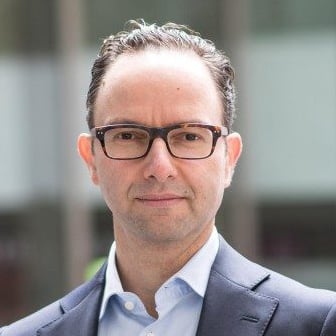A different take on the SVB collapse and the risk of 'bad models.'

The recent collapse of Silicon Valley Bank has sent shock waves through the global markets and provoked questions about the stability of the financial sector.
While the U.S. Federal Reserve raised concerns about problems at SVB more than a year ago, it was still too late for the bank to change course. A recent New York Times article linked the fall of SVB to 'bad models.' The article states that "it became clear to the Fed that the firm was using bad models to determine how its business would fare as the central bank raised rates: Its leaders were assuming that higher interest revenue would substantially help their financial situation as rates went up, but that was out of step with reality."
In this wobbly environment, it looks like financial institutions will need to brace for further volatility. There is one thing, however, that all institutions can do to protect themselves, their assets, and their investors: They can ensure that robust financial models are in place.
Here's the rub: The field of financial modeling is relatively new, only truly emerging with the advent of spreadsheet software in the early 1980s, and taking off after Microsoft Excel came to market in 1985. Since then, financial models have been built and used by bankers, research analysts, hedge fund managers, venture capitalists, and other professionals to make significant financial decisions.
But in truth, most financial models are a mess. They are poorly designed, filled with errors, and difficult to use, creating risk for an organization. Why are these issues so pervasive?
Unlike other professions - accounting, engineering, law, actuarial sciences – where there are global standards and accreditations required in order to practice, there has been no similar equivalent in the field of financial modeling. Most modelers are self-taught or have received minimal training. Until recently, there has been a complete lack of testing and validation in the industry.
When a model is robust it is the most important tool you have at your disposal to make financial decisions.
Here are three things a strong financial model can do for your organization:
I. Tell your story
A strong model serves as a powerful communication tool that enables informed strategic decisions. It can be used to tell the story of an organization clearly and effectively. As a result, a strong model inspires confidence in your stakeholders.
II. Enable optimal decision-making
A best-in-class model adheres to these six criteria:
- Dynamic so that changes to the assumptions flow properly through the model
- Flexible to facilitate changes to the model
- Intuitive so that the flow mirrors how people think about the organization
- Transparent so that it is easy to follow
- Organized in a clear and logical format
- Transferable which means that even though the model was built by one person, it is usable by many
A model that is well-built using these criteria can be used to make optimal financial decisions, which will ultimately lead to success and stability.
III. Manage risk
Many financial models are flawed and incorrect. If a model lacks transparency, is poorly organized, or cannot be easily updated or shared, it creates significant risk for an organization.
The only way to mitigate uncertainty and volatility is to have greater insights into the future. While a model is not a crystal ball, it needs to serve as a forecasting tool to plan for the road ahead. Most strong models project five to ten years into the future. Less time than that is unhelpful for an organization that needs to plan, and potentially pivot, while a longer time horizon simply gets harder to predict. A well-built forecast allows the decision maker to best understand the implications of various events.
When a model goes off the rails, a Silicon Valley Bank implosion may not be far behind. But if your model is strong it should be the most powerful decision making tool in your toolbox. In tough times, your model should give you enough runway to anticipate problems, change course, and avoid a tailspin.
